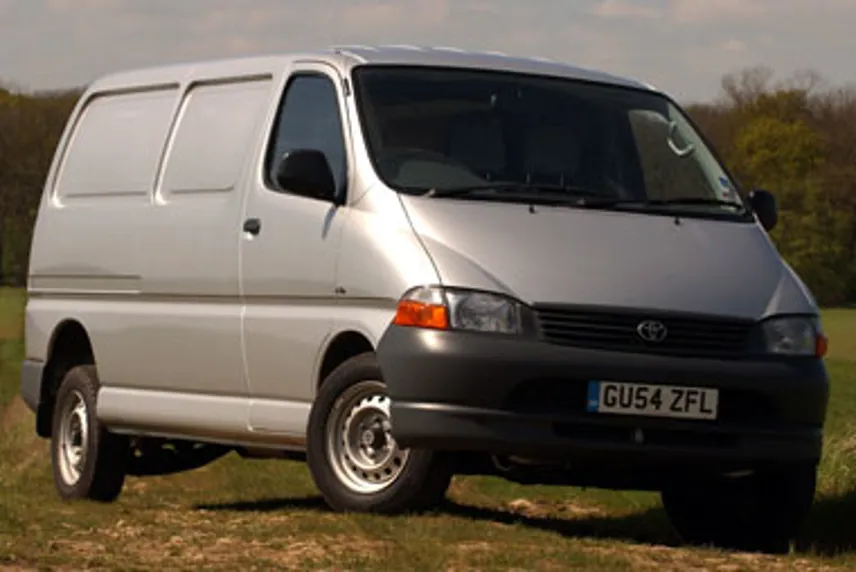Review
And functional the Hiace certainly is.
The driver’s seat is comfortable and supportive and although the seat doesn’t adjust for height, the steering wheel does, so even lanky 6ft 3in specimens like me can be seated in comfort.
The bin in the driver’s side (there isn’t one on the passenger side) is thin, thus no space for white van man’s precious two-litre cola bottle.
There are no can/coffee cup holders either.
But in lieu, Toyota does offer a handy shelf over the windscreen and a large pull-out bin in the centre console.
The CD player works fine but it is one of those horrible specimens with loads of fiddly little buttons all over it.
The criticism may sound like nit-picking but in a recent Fleet News survey on distraction, it was discovered that fiddling about with a stereo increased reaction time by a whopping 93%.
At 60mph this translates to an extra stopping distance of 25 metres.
That’s a sobering thought.
The front detaches, though, so potential thieves may be put off if the driver remembers to remove it.
The full bulkhead comes as standard and it features a glass panel, which helps no end when reversing the vehicle.
In the back
Our test model had an up-and-over rear tailgate, which is fine until someone happens to park too close behind you, in which case you won’t be able to open it.
The side sliding door is worthy of note insofar as it glides backwards and forwards in an almost sinister fashion such is its smoothness and lack of noise. It snicks shut in a similar way.
In long-wheelbase format the Hiace offers 7.0 cubic metres of loadspace as opposed to 6.0 cubic metres for the smaller model and a load length of 2,975mm, width of 1,650mm and height of 1,420mm.
Our van was fully ply-lined, which is a must if the vehicle is to be worth anything at selling time, and there were six countersunk load-lashing eyes in the floor, along with two in the sides.
As with most other panel vans, the rear-end is lit by a rather pathetic little light in the roof.
Surely it wouldn’t cost much for manufacturers to make a decent amount of illumination available in loading areas?
Anyone who has ever tried to fully load up a van in the dark will wholeheartedly agree with me.
On the road
Whatever the shortcomings of the Toyota Hiace are, power is not one of them.
The 2.5-litre common rail diesel engine offers 102bhp but that power seems to make itself available from right the way down at the bottom of the rev range.
I happened to have a long-wheelbase Vauxhall Vivaro 100bhp on test at the same time and on acceleration the Hiace beats it hands down, although both are reckoned to reach similar top speeds of around 95mph.
However, in contrast, the Hiace rolls a lot more on the corners and doesn’t feel as composed in general as the Luton-born van.
It just proves that van technology is marching on at quite a pace.
The Hiace is also one of the few vans in the sector to still have a floor-mounted gearstick (most have now migrated on to the dash), although it was smooth enough to pass muster.
The power steering was a little on the light side for me, but then I have a penchant for lots of ‘feel’ through the wheel so maybe I’m being unfair.
Verdict
The Hiace is showing its age and in many ways can’t compete against the new contenders.
But with its legendary reputation for sheer doggedness and longevity, there is no reason why I wouldn’t recommend it to any fleet buyer.
















